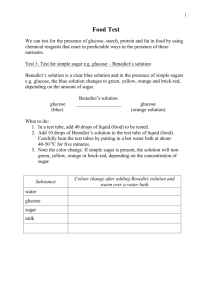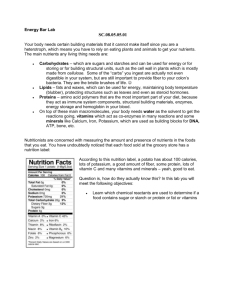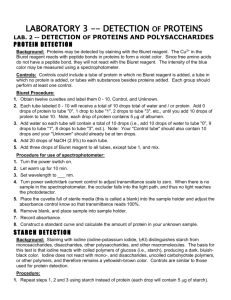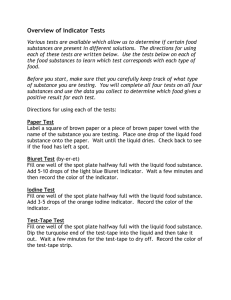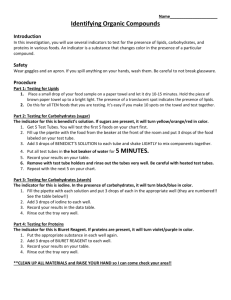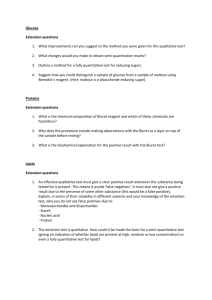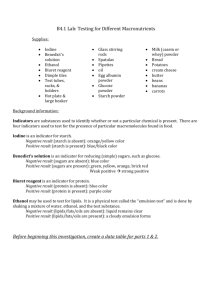LABORATORY 3 -- DETECTION OF PROTEINS
advertisement
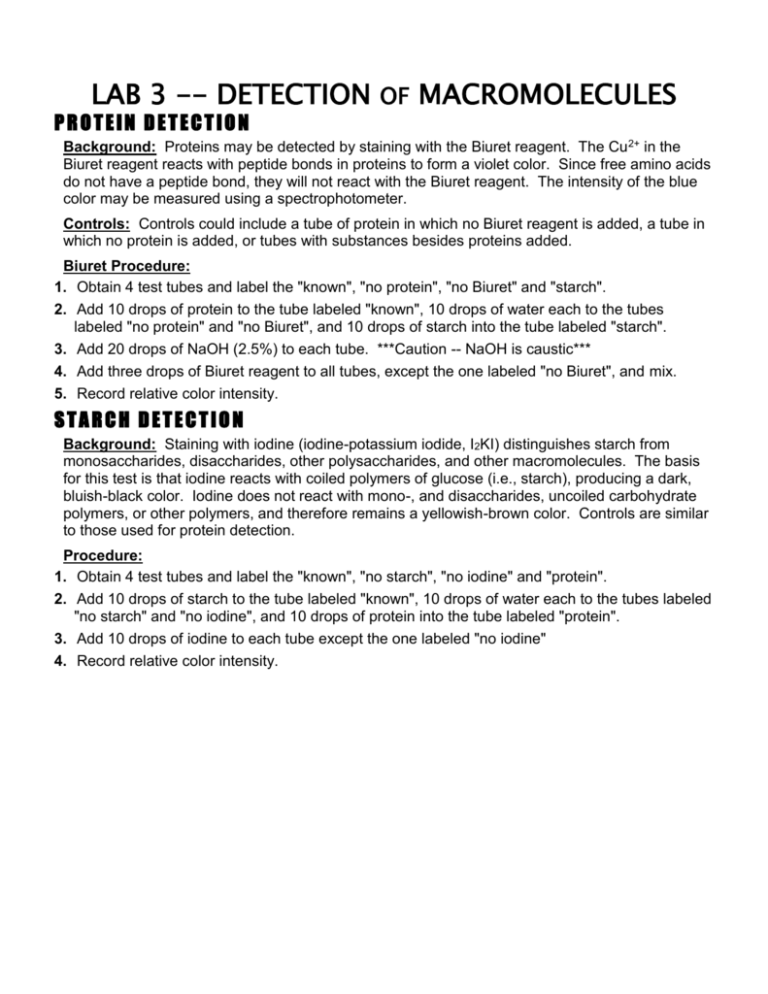
LAB 3 -- DETECTION OF MACROMOLECULES PROTEIN DETECTION Background: Proteins may be detected by staining with the Biuret reagent. The Cu 2+ in the Biuret reagent reacts with peptide bonds in proteins to form a violet color. Since free amino acids do not have a peptide bond, they will not react with the Biuret reagent. The intensity of the blue color may be measured using a spectrophotometer. Controls: Controls could include a tube of protein in which no Biuret reagent is added, a tube in which no protein is added, or tubes with substances besides proteins added. Biuret Procedure: 1. Obtain 4 test tubes and label the "known", "no protein", "no Biuret" and "starch". 2. Add 10 drops of protein to the tube labeled "known", 10 drops of water each to the tubes labeled "no protein" and "no Biuret", and 10 drops of starch into the tube labeled "starch". 3. Add 20 drops of NaOH (2.5%) to each tube. ***Caution -- NaOH is caustic*** 4. Add three drops of Biuret reagent to all tubes, except the one labeled "no Biuret", and mix. 5. Record relative color intensity. STARCH DETECTION Background: Staining with iodine (iodine-potassium iodide, I2KI) distinguishes starch from monosaccharides, disaccharides, other polysaccharides, and other macromolecules. The basis for this test is that iodine reacts with coiled polymers of glucose (i.e., starch), producing a dark, bluish-black color. Iodine does not react with mono-, and disaccharides, uncoiled carbohydrate polymers, or other polymers, and therefore remains a yellowish-brown color. Controls are similar to those used for protein detection. Procedure: 1. Obtain 4 test tubes and label the "known", "no starch", "no iodine" and "protein". 2. Add 10 drops of starch to the tube labeled "known", 10 drops of water each to the tubes labeled "no starch" and "no iodine", and 10 drops of protein into the tube labeled "protein". 3. Add 10 drops of iodine to each tube except the one labeled "no iodine" 4. Record relative color intensity.
